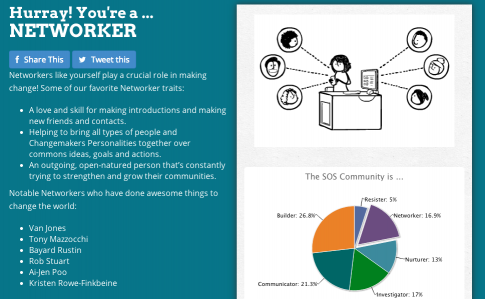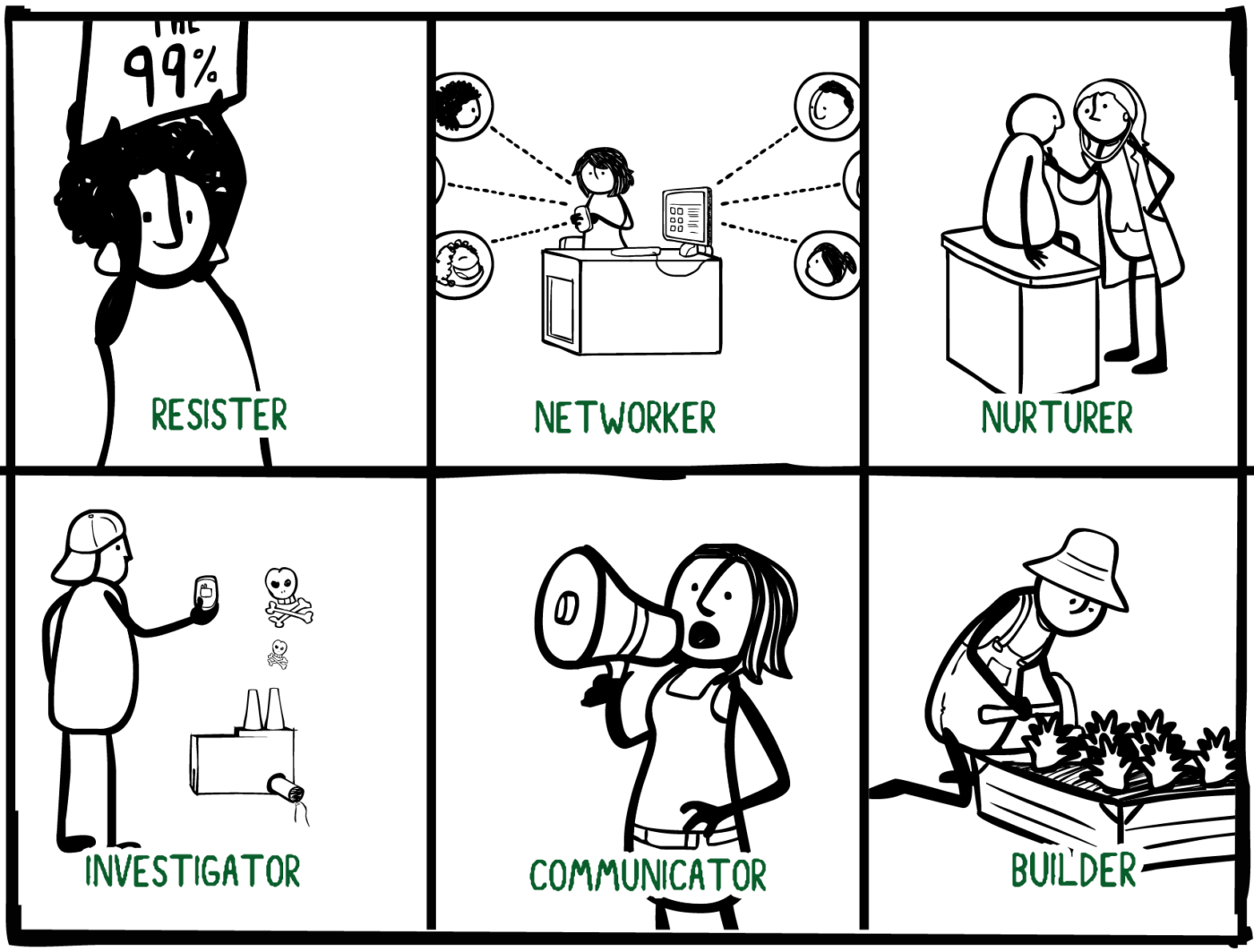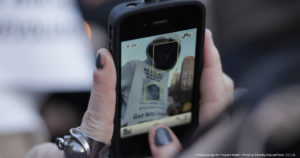The Story of Stuff Project is taking the next step in its dialogue about the impacts of a consumption economy and culture: how to better engage supporters and funnel them toward higher levels of activism.
The organization is embarking on a groundbreaking initiative to move beyond one-step click actions, i.e. petitions, and into a spectrum of deeper, potentially high impact, actions that don’t rely on siphoning small groups of volunteers into high-bar, local asks.
By categorizing potential citizen changemakers into six “personalities” through a digital quiz, Story of Stuff Project has not only come up with a new way to segment their list beyond interests or action histories (donors vs non or one-time vs repeat action takers, etc) but are instead testing engagement and outreach based on individual skills and potentially unique contributions.
Those non-activist changemakers will then, ideally, enroll in an online bootcamp aimed at strengthening their existing skillset, launching October 12. All this is driven by an understanding of each person’s unique abilities and how those map to six changemaker types identified by Story of Stuff Project.
The Personality Quiz
The 7-question personality quiz is part of an effort to help people to see themselves as integral parts of how change is made. The six potential personalities are: Resister, Networker, Nurturer, Investigator, Communicator, and Builder.
No matter who you are, you have a particular role to play. Not just people with the signs who are angry. We need people to design strategies, write checks, develop new materials, etc. People weren’t seeing themselves as activists and with potential to make change. The quiz seeks to change that mindset.
– Allison Cook, Story of Stuff Project
Allison Cook, Director of Community Engagement at the Story of Stuff Project, suggested, “We’ve confused responsible adult hygiene with political action. The original movie is an analysis on how to take big, bold political action. In the past, major changes came through those big actions. No matter who you are, you have a particular role to play. Not just people with the signs who are angry. We need people to design strategies, write checks, develop new materials, etc. People weren’t seeing themselves as activists and with potential to make change. The quiz seeks to change that mindset.”
To date, just over 45,000 people have taken the quiz, with about 75% of those being new to the organization. According to Cook, comparing that to a recent report of 18,000 already on their list,who have taken at least 3 actions within the last 90 days (anything from signing a petition to hosting an event to donating, etc), only approximately 1,600 people have taken the quiz.
So this initial “softer” ask of a quiz activates a different network for the organization. Further, of those who have taken the quiz, less than 10% are determined to be resisters. Most are communicators or networkers, which is vital to any successful campaign in a digital age. Although the personality quiz isn’t a scientific model, it does provide rough data, which can be used if/when the organization wants to target potential supporters based on their personality types.

The “Citizen Muscle” Bootcamp
The idea of a digital bootcamp stems from the organizational philosophy of citizen muscle versus consumer muscle. As Cook explained, “We are good at consumer muscle. Do you know how to order a pair of pants made in Sweden and have them delivered to your door in a couple days? Probably. Do you know how to get a stop sign near your house fixed? Probably not. The bootcamp is an attempt to get people to exercise their ‘citizen muscle.’”
Story of Stuff Project founder & current Executive Director of Greenpeace USA, Annie Leonard, explains “citizen muscle” here:
Investing in training is also an implicit acknowledgement that the organization sees people as critical in their overall theory of change–people are not just names to be added to a petition. Rather, everyone has a role to play and it’s not enough to just throw signatures or money at staff in order to do all of the work.
The “get-your-feet-wet” course starts with an exercise to figure out one’s purpose and moves onto a crash communications course to learn how to talk about the issues at hand. It continues with lessons on growing one’s community of like-minded individuals and concludes with ideas on how to put it all together.
Metrics of Success?
One metric the organization will be looking toward is finding the people with skills they know work. According to Cook, internal testing shows the bootcamp is good at finding leaders within the organization’s existing network. This helps identify people who may be good fits for next-level, in-person trainings.

Citizen Muscle Boot Camp online dashboard.
They’ve further designed some tests to try to answer the following questions:
- Is it better if a changemaker is randomly assigned to a group with others from around the world, or if everyone in group is from the same place?
- Is it better if training is conducted in a general sense, or is it better if its done with issue a changemaker is already interested in?
- And most importantly, is it actually increasing campaign work?
The goal is to evolve power toward community, away from central organizers. Cook suggested the original movie “was aimed at our allies, but regular people actually cared. There was a broader audience for stories in ways we have a dysfunctional relationship with stuff. And we discovered a broader theme–that people do care, and we don’t always give them credit for that.”
So, what type of changemaker are you? You can take the quiz yourself. You can also sign up for the bootcamp now.
And if you haven’t seen the original film, watch it:
Keep up with Story of Stuff Project:
Categories:
organising, mobilising and engagement



